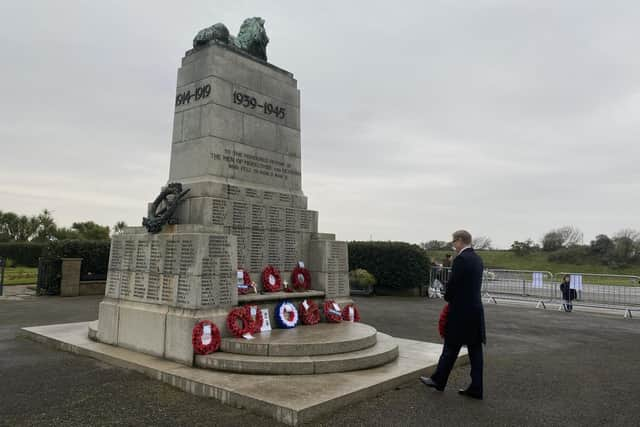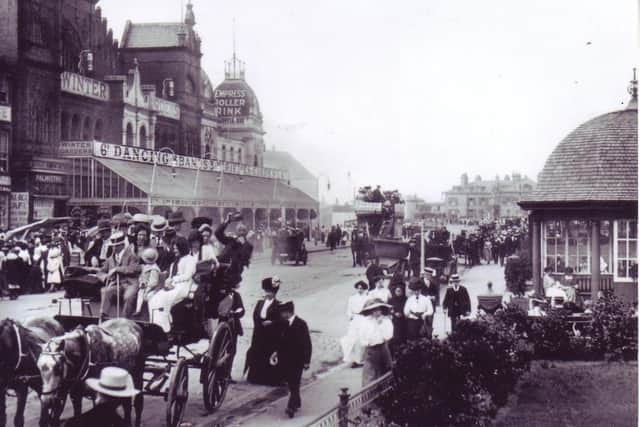Remembering Morecambe's fallen with Peter Wade
and live on Freeview channel 276
Morecambe’s remembrance centred on its promenade memorial unveiled on June 29 1921, two years on almost to the day from the signing of the Treaty of Versailles which brought the Great War to a formal end.
It is generally assumed that the grey granite monument was designed by Thomas Mawson, the renowned garden and landscape designer who had strong local connections.
Advertisement
Hide AdAdvertisement
Hide AdIn fact, credit should go instead to architect and designer James Tarney, along with HA Paley of the Lancaster architectural practice Sharpe, Paley and Austin. The memorial was made by Kirkpatrick’s of Manchester.


Its unveiling was preceded by a service in the nearby Winter Gardens.
A crowd of 3,000 filled the theatre’s auditorium with relatives of the fallen in the orchestra stalls, surviving servicemen in the upstairs circles and galleries,and the Mayor and dignitaries facing them on the stage. The service was conducted by the Rector of Morecambe, Rev E Seymour Scott. The Mayor, John Robert Birkett, clearly overcome by the occasion, could only manage three words – Lest we Forget. Outside, the memorial was unveiled by three rank and file representatives of the main armed services – George Lee (Royal Navy), Henry Mogg (Army) and Stephen Wilson (Royal Air Force).
They were assisted by the seven-year-old son of Private George Austin, one of the first Morecambe men to have died in the Great War.
Advertisement
Hide AdAdvertisement
Hide AdPrivate Austin’s name was one of more than 200 recorded beneath the motto ‘To the honour and memory of the men of Morecambe who fell in the Great War.’ A salute was fired by members of the King’s Own (Royal Lancaster) Regiment, the Last


Post played and wreaths laid. The need for a memorial to the fallen was proposed as early as November 1917. Among those to respond was Mawson who produced a design for a tower at Scalestone Point. This, looking a bit like the Clock Tower, would have had a lift, tea room, reading room and bandstand. Other ideas included an extension to the cottage hospital (the Queen Vic), monuments, a memorial hall and library.
A temporary memorial, a broken column (signifying lives cut short) surrounded by flowers, was set up for Peace Week in September 1919 near the central bandstand. It was attended by a Guard of Honour of Boy Scouts. Morecambe’s memorial prompted the setting up of Lancaster’s in 1924.